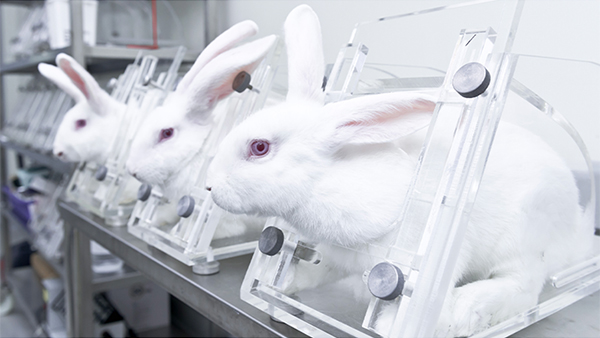Animal Experiments
Types of Animal Experiments

Animals are used in experiments for a variety of purposes: to understand living systems and disease processes, to develop new drugs and examine their effects, and to test whether chemicals are safe for both people and the environment. In some cases animals are used to research the animals themselves, such as for veterinary medicine, or to improve animal welfare, such as in conservation work or the agriculture industry. Research might involve studying animal behaviour under different circumstances, taking tissue samples and subjecting them to different tests, or exposing the animal itself to different substances and analysing the effects on a particular system or organ, or on the whole animal either while still alive, or after death.
Types of animal experiments include:
Basic research
Experiments to find out more about how animals' bodies work. This is also called 'curiosity-driven research' as it does not have any direct use or relevance. The information gathered may or may not be useful at some future time for further experiments. It does not involve the testing of new medicines for humans or other animals and is conducted entirely on a voluntary basis.
This type of curiosity-driven research is often carried out by universities and some examples include recreational drug research, psychology experiments and the development of ’animal models’ of neurological diseases such as Alzheimer’s and Parkinson’s. The likelihood of such speculative research actually leading to advances in human medicine is very slim.
Genetically modifying animals
The use of genetically modified animals (GM) has been an increasing trend for the last 30 years and while the sheer scale of GM animal use is difficult to determine, it is clearly responsible for year on year increases in animal numbers worldwide.
Mice and other animals are being bred with specific genes ‘knocked out (deleted)’ or ‘knocked in (inserted)’ into the cells of their bodies. Researchers focus on genes that may be relevant in human medical conditions.
Far from being harmless tests, suffering has been acknowledged at every step of the GM process. For example, many of the animals die while they are still babies because the defect they have is so severe. It is also an extremely wasteful process as a huge number of animals are often needed to produce just one specific type of GM animal who carries the desired traits.
Experiments using GM animals are unable to fully mimic complex human diseases, particularly those like cancers and heart disease that are more commonly caused by lifestyle and environmental factors, rather than genetics.
Regulatory testing
Regulatory testing is standardised testing designed to see if medicines, chemicals (including paints, dyes, inks, petrol products, solvents, tars and waste materials), pesticides, biocides, food additives, cosmetics and other products are safe for use, and that they do their job effectively. Types of regulatory testing include toxicity testing and batch safety and potency testing.
In these experiments, animals are forced to eat or inhale substances, or have them rubbed onto their skin or injected into their bodies. The animals are then subjected to further monitoring and testing before almost always being killed, so that researchers can look at the effects on their tissues and organs.
Source: Crueltyfreeinternational.org

